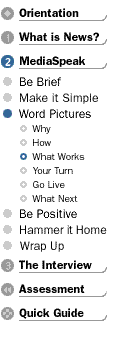I’ve affiliated with the Learning Irregulars, (“committed to making the world a better place by accelerating innovation in organizational learning. We are open, inquisitive, non-profit, impatient, and feisty”) As our first public outing, we held a meeting this week.
The approach we’re taking for now is that we conduct activities, like meetings, webinars, and the like, asking interesting and important questions, making them public and collecting artifacts including pictures, reflections, etc. that we also make available. I like to think of it as ‘learning out loud’. We’re looking to create a dialog around how to accelerate (and improve) organizational learning.
I conducted the part of the meeting where we told stories, and I’ve written those up over at the site. There were some interesting themes that emerged about how we’re not facing up to the large problems that confront us, though there are some great ideas that we really need to take advantage of. Some great memes included ‘positive deviance’ and ‘questing disposition’.
I’ll quote here the takehome that I took from the meeting:
There was some consistency about needing to be more open and flatter, less hierarchical, that we could learn much from other areas in many ways …, and that we need to provide tools, models, ideas, and examples.
There should (fingers crossed) be an archive of the meeting, and we’ll be holding more. Stay tuned! I welcome your thoughts.
 When we did a course on speaking to the media (and without an LMS to handle the navigation, so no built-in ‘next button’), we had a scheme that both provided a good default, and allowed self-navigation. We had the elements of each of the 3 modules labeled from a learner perspective (e.g. Show Me, Let Me). And we had a nav bar in the upper left that let you choose where to go. At the bottom of the screen (we erred for scrolling rather than one page to minimize clicks and load times, this was over 10 years ago) were also some options of where to go next, with one indicated as the recommended choice. We graphically supported this with a dotted line leading the learner through the content and to the default choice (follow the bouncing ball).
When we did a course on speaking to the media (and without an LMS to handle the navigation, so no built-in ‘next button’), we had a scheme that both provided a good default, and allowed self-navigation. We had the elements of each of the 3 modules labeled from a learner perspective (e.g. Show Me, Let Me). And we had a nav bar in the upper left that let you choose where to go. At the bottom of the screen (we erred for scrolling rather than one page to minimize clicks and load times, this was over 10 years ago) were also some options of where to go next, with one indicated as the recommended choice. We graphically supported this with a dotted line leading the learner through the content and to the default choice (follow the bouncing ball). While I’ve lots more to say, I put a short version of my vision of elearning strategy in
While I’ve lots more to say, I put a short version of my vision of elearning strategy in